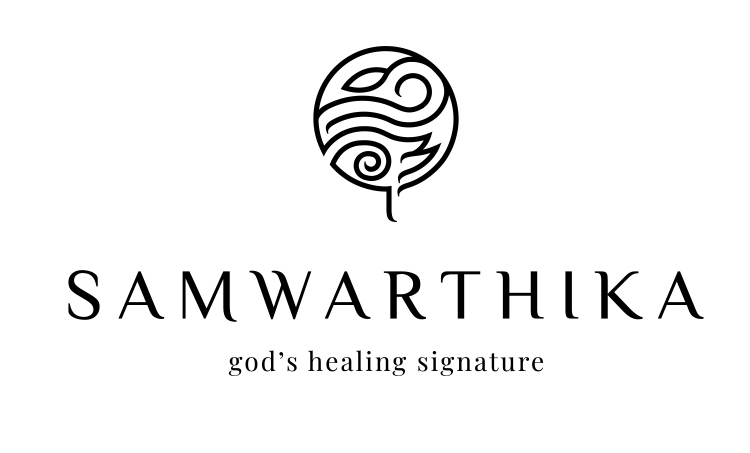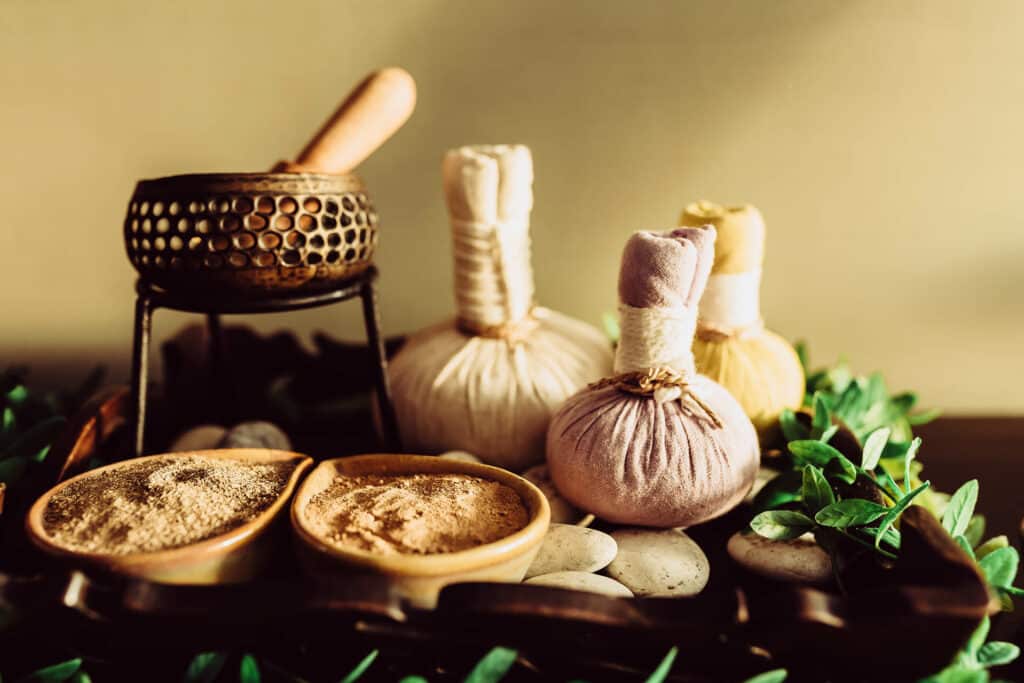Pentads represent the five essential Ayurvedic therapies that constitute the core of the Panchakarma process.
Diverse approaches to rejuvenation have been proposed across various Ayurvedic traditions, and these have been organized into a set of five techniques collectively known as Panchakarma.
As per the teachings of the Charaka school of Ayurveda, the five principal therapies are as follows:
Vamana (Emesis Therapy)
Virechana (Purgation Therapy)
Nasya (Nasal Therapy)
Anuvasana Vasti (Therapeutic Enema with Medicated Oil)
Niruha Vasti (Enema with Herbal Decoction)
Subsequently, Sushruta, the renowned Ayurvedic surgeon, and his school amalgamated the last two Vasti (Enema) methods into one and introduced Raktamokshana (blood-letting) into the quintet of Panchakarma procedures. This addition was based on the belief that impurities within the blood are a significant cause of illnesses, warranting their purification within the Panchakarma framework.
Vamana Chikitsa
Vamana Chikitsa, also known as Emesis Therapy, entails controlled and medically induced vomiting. Its purpose is to eliminate excess Kapha Dosha from the body, which if left unchecked, can lead to various ailments such as acne, asthma, arthritis, chronic cold, and diabetes. However, this treatment is not recommended for children, the elderly, pregnant women, or individuals with tuberculosis or hepatitis.
The treatment process begins with Purvakarma, a preparatory phase lasting from three to seven days. During this period, both internal and external oleation are carried out using medicated ghee or oil. Intense sweating is induced, causing the excess Kapha to accumulate in the stomach.
Following the preparatory phase is Pradhanakarma, the main therapy, focused on expelling the excess Kapha from the body. Patients consume substances like black gram and sesame that promote Kapha accumulation, along with herbal mixtures like Madana (Randia Dumetorum) to induce vomiting. Typically, the elimination of Kapha commences within about 30 minutes after ingestion, and the vomiting ceases naturally after approximately six to eight cycles.
Paschatkarma, the rehabilitative phase, follows Pradhanakarma. During this stage, the patient adheres to a specialized diet, refrains from raising their voice or excessive sun exposure, and ensures adequate rest.
Virechana Chikitsa
Virechana Chikitsa, also known as Purgation therapy, involves the removal of toxins from the body through the utilization of herbal laxatives. This process induces a bowel movement, expelling detrimental impurities linked to Pitta Dosha. This therapy specifically targets organs in the lower abdominal region, including the small intestine, kidneys, colon, liver, and spleen, resulting in their cleansing.
The treatment begins with Purvakarma, a preparatory phase lasting a week, during which medicated ghee or oil is employed. Following this oleation therapy, intense sweating is induced to isolate the imbalanced doshas within the system.
In the main treatment phase, Pradhanakarma, patients are usually administered natural laxatives such as Trivrit (Ipomoea Turpethum), Jayapala (Croton Tiglium), Aragvadha (Cassia Fistula), and Avipathi Churna. The laxative effects typically manifest within about two hours of ingesting these herbal preparations.
When conducted correctly, Virechana therapy does not trigger the usual side effects associated with diarrhea, such as weakness and electrolyte loss. This treatment is recommended for addressing various conditions including diabetes, colitis, jaundice, spleen enlargement, arthritis, dysuria, asthma, hemorrhoids (piles), glaucoma, and gout.
Nasya Chikitsa
The nasal passage serves as a conduit to the brain. Nasya Therapy exploits this channel to administer a blend of medicated oils, powders, and herbal extracts, effectively addressing various neck and head-related ailments such as sinus issues, throat infections, eye infections, migraines, and gout.
Nasya treatments are categorized based on the type and potency of the medicine utilized. For instance, Virechana Nasya employs substances like honey, ghee, and oils, while Dhmana Nasya prefers the use of powders (churnam). Specialized Nasya treatments are also available for revitalization and immediate relief. The individual’s body constitution and dosha composition play a crucial role in determining the appropriate Nasya treatment.
Before the treatment, the patient undergoes Purvakarma, which involves invigorating massages using herbal oils and ghee on the head, throat, and neck to induce sweating. Following the therapy, the Paschatkarma phase involves rest and gargling to complete the treatment process.
Anuvasana Vasti
Given that Vata is a dosha responsible for regulating a majority of our bodily functions, imbalances in Vata due to dietary or environmental factors can lead to dysfunction. Vasti (Enema) treatments offer remarkable effectiveness in eliminating Vata-related toxins from the body. Two types of Vasti treatments, namely Niruha Vasti and Anuvasana Vasti, are administered based on the patient’s bodily condition and treatment needs.
Anuvasana Vasti involves Enema Therapy using medicated oils. The primary residence of Vata is the colon, and this procedure serves to rejuvenate the lower intestinal tract.
To begin with, the patient undergoes intensive massages on the lower abdomen, aimed at loosening toxins and preparing the body for the detoxification process.
Subsequently, a mixture of herbal oils is introduced through the anal passage. This mixture remains in the colon, facilitating healing. Eventually, the toxins are eliminated from the body. Throughout the treatment, the patient is advised to consume lukewarm water. Anuvasana Vasti represents a nourishing form of enema therapy.
Niruha Vasti
The term “Niruha” translates to ‘elimination’. Niruha Vasti involves a purifying enema. Its distinction from Anuvasana Vasti lies primarily in the utilization of kashaya, a specialized herbal decoction, in lieu of medicated oil. Consequently, it’s also known as Kashaya Vasti. Following its injection into the anal passage, this detoxifying herbal mixture stimulates the colon to expel accumulated Vata-related impurities within approximately an hour.
Administering Niruha Vasti necessitates a comprehensive assessment of the patient’s dosha characteristics. The dosage strength and the composition of the kashaya are determined based on the specific attributes and severity of the individual’s ailment.

